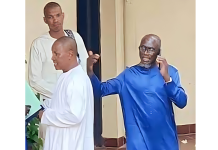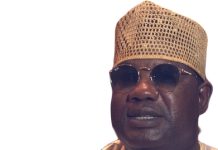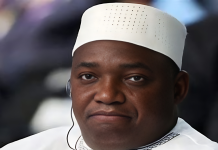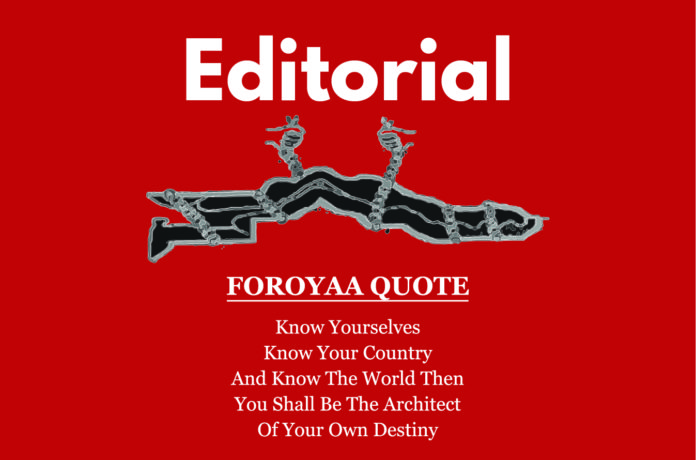Since President Barrow assumed office people have been wandering whether Coalition 2016 would be the basis of constituting a cabinet or his own personal volition. The initial decision to provide ministerial appointments to each of the seven political parties which formed the Coalition as well as the appointment of the Independent presidential aspirant and the Chairperson of the Convention which ultimately gave rise to the selection of President Barrow as the presidential candidate to a ministerial post and position of office of vice president respectively gave the impression that Gambia was headed for a Coalition Government for the term that President Barrow sought to stay in office. Only one party chose to stay out of Cabinet and file candidates for the National Assembly elections. Many Gambians were led to believe that the ministerial posts awarded to many Secretary Generals and party members of the various political parties were given to them on the basis of party affiliation.
The ministerial posts of finance and economic affairs, foreign affairs and regional government were considered to have been allotted to the UDP; agriculture and fisheries were considered to be allotted to the PPP; Youth and Sports to the GPDP; Interior to the GMC; the Environment to the NCP; tourism to the NRP; Trade to the Independent presidential aspirant and Vice President to the Chairperson of the Coalition 2016 Convention. PDOIS was satisfied with not having a seat in the Cabinet.
The teething problem experienced by the Barrow administration revolved around the constitutionality of the appointment of the Vice President because of the age limit imposed by the then Constitution. The other burning issue was the question of serving a three year term. The dilemma was resolved through constitutional amendments which made many people to argue that President Barrow had bent over backwards to accommodate the Chairperson of the Convention so as to guarantee the independence of the Coalition presidency from partisan consideration. This made many to eventually curb their attacks of the long vacancy in the office of Vice President and the maintenance of an incomprehensible overseer role. The fact that criticism subsided conveyed to President Barrow that the honey moon state of his presidency had not ceased.
Suspicion started when the Kanilai case was mishandled leading to blood stains on the presidency. This was followed by storm and stress of the ‘no dumping’ movement at Bakoteh. The honey moon was over when the occupy West Field movement was given a rough welcome and the Ministry of the Interior removed without any GMC replacement. This made it abundantly clear that the Barrow administration was gradually moving away from Coalition consideration and was being absorbed into the milieu of the executive presidency not bonded by Coalition agreement.
During the anniversary of the Coalition victory President Barrow introduced the Barrow youth movement and many people began to speculate that he was building his own political foundation independent from all political parties in the country, which began to create a dent in the membership of many political parties which subscribed to the Coalition as well as those who did not form part of the Coalition.
Following this anniversary many supporters of the different political parties who were loyal to their party leaders and political parties began to conceive the Barrow administration as a rival political undercurrent.
The Council elections which were contested on partisan basis did not help the Barrow administration to maintain a Coalition identity. The campaign messages tore the country apart. One expected that the Barrow administration after the end of the 2016-2018 electoral cycle would stand above the different political currents and proceed to be the unifying factor in the midst of political diversity in order to pursue its mandate on a smooth political terrain.
Hope emerged in the hearts of many when the international community pledged to support the transition in The Gambia to the tune of 1.45 billion euros. Although the money is merely a pledge it gave the impression that the transitional administration will now move to implement the promises of the Coalition. One expected the Barow administration will identify those who are most committed in implementing the promises and proceeds to match words with deeds.
Faraba came to give the administration an alarming awakening that it was put in office to address the shortcomings of the past and not to breed new shortcomings. The government responded by calling for a Coroner’s Inquest and a Commission of Inquiry. This along with the firm stand of the National Assembly gave hope that business will not be as usual.
Unexpectedly, on Friday 29th June 2018 the whole political map of the transition was redrawn. It is abundantly clear that Coalition 2016 is no longer the basis of cabinet appointments. Foroyaa has conducted investigation and it is clear that the decision to reshuffle cabinet was not based on any Coalition consultation. Hence many people are now claiming that the Coalition is finally dead after being put on a life support system for a long time.
Where is President Barrow leading The Gambia is the burning question of the day. Where do Gambians want to head to is what each Gambian ought to decide for oneself. The debate on the future of The Gambia is now the burning issue of the day. Which way forward for The Gambia? Gambians must decide.



















